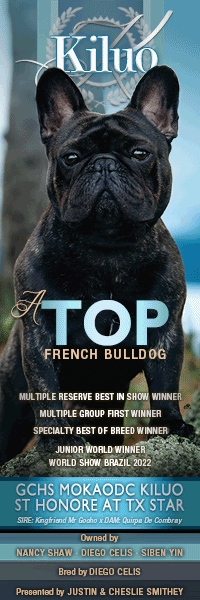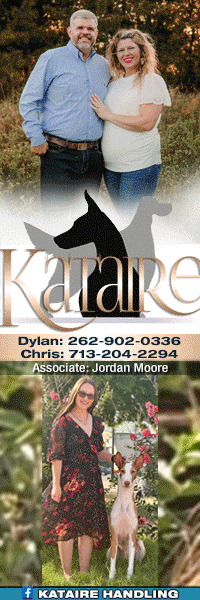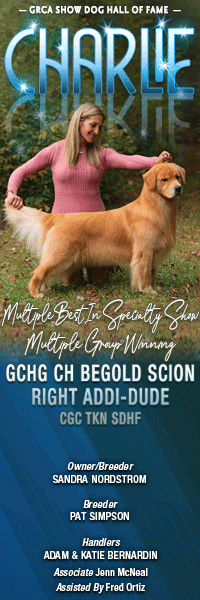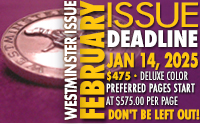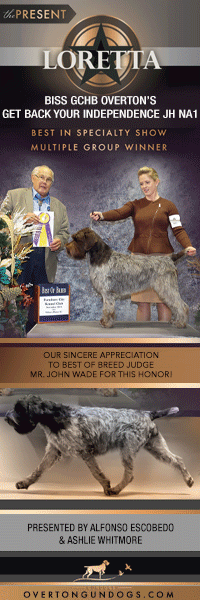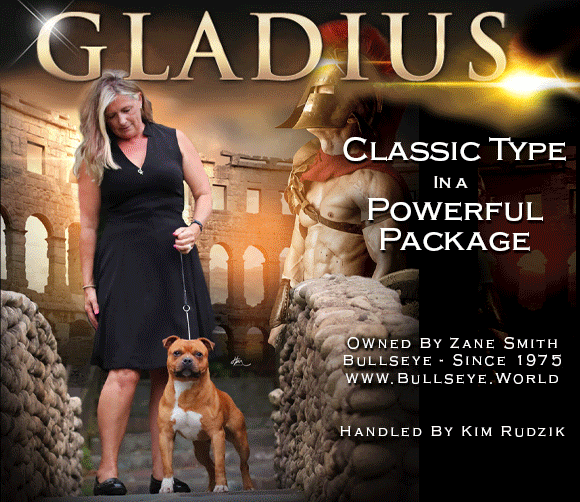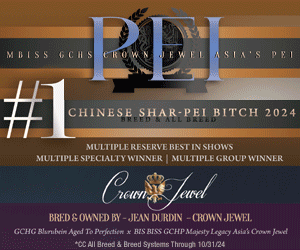From The CC Vault: Reflections on Judging
By Dr. Gareth Morgan-Jones
Originally published: February 2010
 As a follow-up to my last essay, published in the 2010 Annual, in which I discussed how we use and apply standards it might be appropriate to again return to the subject of judging and how those of us who are involved in this activity view our role. How do our viewpoints impact the way we go about the business of evaluating respective merit? How do our priorities differ or vary? What impact does experience have? How well, or otherwise, do we translate educational experiences into acceptably valid practice? These are some of the things which seemingly always fascinate the mind. Periodically perhaps we can all do with a primer on the variables in this regard. We, exhibitors and judges alike, need to become fully cognizant of the way things work. We become knowledgeable about this especially and largely through personal experience. We become mindful of all the permutations, of all that is involved, by the very act of doing. It isn’t some perfectly simple, uncomplicated undertaking, it isn’t a totally superficial activity. It may not be quantum physics but it isn’t straight-forward plumbing either. There are tortured, somewhat complicated, interdependencies at play, of which we should always be aware. Learning curves vary, the ability to effectively apply acquired information differs, but when all is said and done, practical knowledge and skill in its employment surely comes from continued participation. Proficiency comes from practice, provided other ingredients are there in sufficient quantity. What is personally encountered, undergone, lived through, contributes to a cumulative effect, a condition. Every judge has a so-called comfort zone when it comes to individual breeds. The confidence level, and the degree and intensity thereof, obviously differs for various reasons. This is surely reflected in uneven competence. The extent-of-familiarity factor kicks in. Awareness, or lack thereof, of the trade-offs which, more often than not, have to be made contributes in all of this. What goes into decision making will not always necessarily be the same. It essentially depends on a bipartite situation where there exists a correspondent influence. There is a complementariness being factored in. Firstly there is the preparedness of the person doing the evaluating, secondly there is the relative merit of the exhibits under surveillance. These serve to fill out the picture. Where there is harmony in this context a decision is reached easily and fluidly, where there is conflicting confusion something isn’t working.
As a follow-up to my last essay, published in the 2010 Annual, in which I discussed how we use and apply standards it might be appropriate to again return to the subject of judging and how those of us who are involved in this activity view our role. How do our viewpoints impact the way we go about the business of evaluating respective merit? How do our priorities differ or vary? What impact does experience have? How well, or otherwise, do we translate educational experiences into acceptably valid practice? These are some of the things which seemingly always fascinate the mind. Periodically perhaps we can all do with a primer on the variables in this regard. We, exhibitors and judges alike, need to become fully cognizant of the way things work. We become knowledgeable about this especially and largely through personal experience. We become mindful of all the permutations, of all that is involved, by the very act of doing. It isn’t some perfectly simple, uncomplicated undertaking, it isn’t a totally superficial activity. It may not be quantum physics but it isn’t straight-forward plumbing either. There are tortured, somewhat complicated, interdependencies at play, of which we should always be aware. Learning curves vary, the ability to effectively apply acquired information differs, but when all is said and done, practical knowledge and skill in its employment surely comes from continued participation. Proficiency comes from practice, provided other ingredients are there in sufficient quantity. What is personally encountered, undergone, lived through, contributes to a cumulative effect, a condition. Every judge has a so-called comfort zone when it comes to individual breeds. The confidence level, and the degree and intensity thereof, obviously differs for various reasons. This is surely reflected in uneven competence. The extent-of-familiarity factor kicks in. Awareness, or lack thereof, of the trade-offs which, more often than not, have to be made contributes in all of this. What goes into decision making will not always necessarily be the same. It essentially depends on a bipartite situation where there exists a correspondent influence. There is a complementariness being factored in. Firstly there is the preparedness of the person doing the evaluating, secondly there is the relative merit of the exhibits under surveillance. These serve to fill out the picture. Where there is harmony in this context a decision is reached easily and fluidly, where there is conflicting confusion something isn’t working.
Have you lost me yet?
What I am trying to say is that during the process of judging dogs in conformation competition there are a number of things which enter into the equation. Priorities may fluctuate, focus may vary, competence may be compromised. Beyond the learning experiences which judges undertake there is the sometimes daunting challenge of applying the knowledge gained in a specific context. From time to time judges are asked questions as to whether or not experience plays a significant role in how they approach their role and whether or not their priorities change, or are at least somewhat modified, as time goes by. In other words, whether being involved in this activity is a progressive learning experience or something which is static and largely unchanging. Oddly enough when indivuduals are asked to comment on such matters different answers and observations are almost always forthcoming. Judges do indeed, apparently, view the way they go about their business in various ways. This is perhaps surprising, if you think seriously about it. There is certainly no uniformity in the way folks look at how to responsibly fulfill this function. Some maintain that they judge exactly the same today as they did on day one and never deviate from the way they have always gone about this task while others believe that they mature and learn the more they judge. Some are evidently stuck in their ways permanently, so to speak, others take a more flexible stance. Some say that they never change their thinking about the process of reaching judging decisions whereas others will say that their approach might vary and that they might modify their emphasis and priorities, depending upon their level of experience. Some stick to what they believe, irrespective. Now the corollary questions which arise from this are as follows. Which of these two diammetrically opposed mental positions are the better from the point of view of cogency, effectiveness and validity? Which is the more convincing in terms of likely outcome? Do the good judges belong in one category and the not-so-respected ones in the other?
It can surely be argued that the aptitude and facility to evaluate exhibits well is the product of intelligence derived directly from knowledge and experience. Information is gathered about the morphology, structure, and resultant movement, of the dogs being shown and this is followed by the application of that which is gleaned. This is the way in which comparative evaluations of respective merits are predominantly made. Then there is, of course, the showmanship factor. It follows that each judge has, ideally, to undergo a continuing process of conscious learning in order to reach a certain level of thought proficiency. By this I mean that an effective judge has to become adept at balancing the various elements which come into consideration. These will not always be the same and this is obviously why the notion of practice makes perfect comes into play. Possession of knowledge is one thing, the effective application thereof is something else entirely. The latter activity is where the going sometimes gets tough. Full awareness of the trade-offs which invariably have to be made is a starting point. These often differ, depending on the breeds being passed upon. This is surely why there has, ideally, to be some flexibility. Prioritizing is not something which should necessarily be uniform across the board. Some breeds are more challenging than others for reasons which are usually abundantly and perfectly obvious. The skill and resultant stature of a judge, and the respect which he or she commands, is certainly, or should be, in direct proportion to how he or she deals with these challenges.
In this day and age, where we see further changes in breeds, a judge has to be cognizant of a certain responsibility. The focus which he or she adopts has to be relevant. It’s really no use going around merely saying that balance and type are the things which one prioritizes. This is all well and good as an overall sentiment, on face value, but a little too abstract and generic to be meaningful. A certain specificity is absent in such statements. This is why parent clubs from time to time fire off these communications with containing messages directed at those of us who perform the judging function. I’ve been the recipient of several myself this past year. When the outline of a breed, for example, is modified by deliberate selection the red flags go up and a judge has to be on top of his game in order to responsibly deal with a particular challenge. This has been the case with at least two numerically-large and popular breeds in these past several years. In judging well a deliberate series of thought processes are involved and being aware of what one is dealing with is surely critical. If a standard calls for a square breed and it evidently becomes rectangular over time a judge has to resolve in his or her mind how to confront the situation, specifically whether or not to take a position and make a stand. This requires courage. Same with changes in size. There is justified concern. Extent of preparedness is always reflected in competency or lack thereof. An ability to determine the degree of deviation from the understood ideal characteristics and the significance of same comes into play here.
Judging well, as I said in one or two previous essays, some years ago now, essentially involves relating confronted reality, in the form of exhibits, to a concept of an ideal. Not always an easy thing to do I might add. The process involved can be tortuous, especially given the shifting and erratic genetically-based vagaries which occur within breeds. When there occurs a readily discernible deviation from that which is considered normal and proper things can get mighty awkward and difficult. Well, not really, you might readily say. That which is contained in breed standards serves, after all, as a foundation. In order to not only accurately compare a number of dogs but also to quickly assess how each matches up, relative to others, to the dictates of a written description, requires considerable background and facility however. Not only this, an immediate and intuitive awareness, recognition and appreciation must come into play. A certain cognition, the act of conscious knowing, kicks in, followed hopefully by rational thought. Quite obviously this involves much more than determining respective merit in terms of overall make and shape. It should also include what one might refer to as a feel for the essence of a breed. This does not always come easily, which accounts for the fact that some judging can best be described as being predominantly generic in nature. This is where the experience factor comes into play. It takes time and exposure to hone and fine tune an understanding of the essential characteristics of any breed.
In the process of becoming sufficiently familiar with a breed to judge it competently and with discernment, a number of essential steps have to be taken. Three main actions are involved. First and foremost is the acquistion of basic knowledge, including particulars of origin, purpose, development, typifying characteristics, and so on. Then there comes the integration of this information into what one might refer to as a previouly-possessed understanding of things such as canine anatomy and structure. Following this comes the application of the newly-obtained information and it is in this area that the greatest challenge lies. A concientious judge surely continues to learn and thereby progessively hones and sharpens his or her skills. In the ongoing process a sophisticated feel for each breed is cultivated. Not to do so, more often than not, translates into generic judging. Looking for an overall picture of a dog is fine in and of itself but there is surely a little more to it than that. The ultimate learning in all of this comes with the doing and this is a developmental process. When someone says that their judging priorities do not ever change do they mean in general terms or are they saying that they judge every breed in the same way over time, irrespective of a prevailing and altered context? There is, of course, always a challenge in setting a balance and not to overly-emphasize one aspect or other. Take, for example, the matter of making a trade-off between a better-made exhibit versus one that exemplifies superior breed type. Those who judge the Toy breeds will know exactly what I’m talking about. How does one weight the one against the other? On what basis does one prioritize? Personal whim or more substantive reasoning? Obviously, in order to be prepared for this sort of choice, there has to be some prior awareness. Without broad experience, however much knowledge one possesses, there comes a time when difficult choices have to be made.
I believe that it is true to say that our better judges have mastered their craft by lengthy and extensive practice. In this the application of mental discipline as well as sound intellectual method is essential. The former is in part needed in order to neutralize over-emotional, subjective responses to reality. A judge may not always be fully aware of all of the influences which go into the act of reaching decisions but there has to be some control. Likewise a judge may think that he or she approaches the task in precisely the same way each time in the ring but may not in fact do so. Hence the oftentime differences in response when asked about such things as priority consistency. Judging is not all about instinct and intuition. A perfectly valid decision does not, however, necessarily have to be based solely on reason. A proficient judge can evaluate some of they key features of a particular dog, such as profile, balance, and movement pecualiarities, readily but after this comes the more sophisticated part which involves a consideration of that which we refer to as type. Whether or not some or all judges go through periods when their focus and priorities differ is, in reality, anyone’s guess. Some might think this to be the case when, in reality, nothing could be further from the truth and vice versa. What is viewed by the mind as the relative importance of one thing or another at any given time may certainly vary. This is in the subjective nature of things. In trying to analyze and understand this evaluative process there are always going to be some intangibles. So how much does competency, in your considered opinion, depend upon experience?
Short URL: https://caninechronicle.com/?p=249776
Comments are closed


